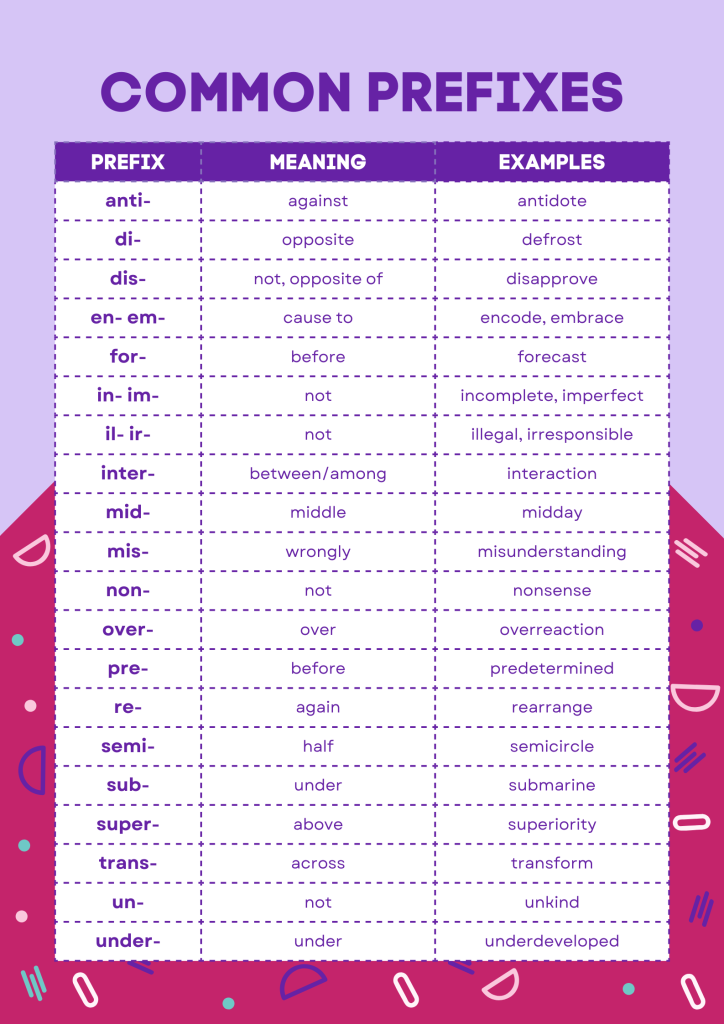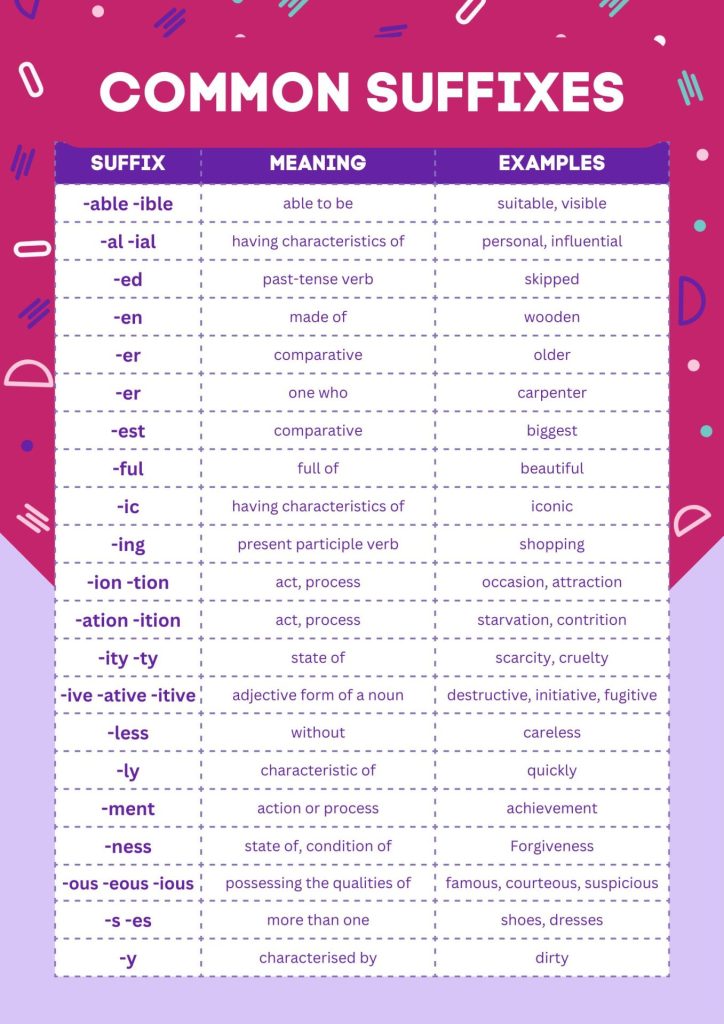Understanding Affixes: Exploring the World of Prefixes and Suffixes
Table of Contents
Introduction
Exploring Affixes: An Introduction
Affixes, particularly prefixes and suffixes, play a pivotal role in shaping the structure and meaning of words in the realm of grammar. Let’s delve into the intricate world of affixes and unravel the significance of prefixes and suffixes in language.
Analogy of Definition
Understanding Prefixes and Suffixes
Prefixes and suffixes are essential components of word formation, with prefixes being added to the beginning of a word and suffixes attached to the end. These affixes serve to modify the meaning or function of the base word, contributing to the richness and versatility of language.
Method
Identifying Prefixes and Suffixes
Recognizing prefixes and suffixes involves analyzing the structure of words to identify affixes and comprehend their impact on the overall meaning of the word. This process entails breaking down words into their constituent parts and discerning the role of prefixes and suffixes in word construction.
Prefixes
Prefixes are word parts added at the start of a word to change its meaning or create new words. For instance, consider the transformation of “rational” into its opposite, “irrational,” by adding the prefix “ir-.” Similarly, the addition of “un-” to “happy” generates the term “unhappy,” conveying a negation of happiness.
In certain cases, prefixes necessitate the use of a hyphen for clarity or to maintain grammatical consistency. Notably, prefixes like “all-,” “self-,” and “ex-” (when indicating a former status) consistently require hyphenation. For instance, “self-aware” encapsulates an individual’s consciousness of their own thoughts and feelings, while “ex-boyfriend” denotes a person who was previously in a romantic relationship with another.
These hyphens serve as visual cues, guiding readers to parse compound words seamlessly, ensuring comprehension and grammatical correctness in written communication.

Suffixes
Suffixes are the final touch to a word, placed after the root word. While prefixes often change a word’s meaning, suffixes primarily serve grammatical functions:
- They help with verb conjugation, like “jump” becoming “jumped.”
- Suffixes denote plurality, as in “child” becoming “children.”
- They show possession, such as “cat” to “cat’s.”
- Reflexive pronouns are formed with suffixes, such as “him” becoming “himself.”
- Comparatives and superlatives are created by adding suffixes, like “big” to “bigger” and “biggest.”
- Suffixes can also change the word’s class, turning “act” into “actor.”
In wrapping up, grasping the roles of prefixes and suffixes is crucial for unraveling word structures and meanings. By becoming adept at spotting these affixes and understanding how they shape words, we can significantly boost our vocabulary comprehension and writing prowess. Whether it’s tweaking a word’s meaning with a prefix or adding grammatical nuances with a suffix, mastering these linguistic elements empowers us to express ourselves more effectively. So, the next time you encounter a new word, take a moment to dissect its prefixes and suffixes—they serve as valuable clues to deciphering its essence and usage in context.

Examples
Prefix Example: ‘Un-‘ + ‘happy’ = ‘Unhappy’
Suffix Example: ‘Quick’ + ‘-ly’ = ‘Quickly’
These examples illustrate how the addition of prefixes and suffixes can alter the meaning and usage of words, showcasing the transformative power of affixes in language.
The examples of ‘Un-‘ + ‘happy’ resulting in ‘Unhappy’ and ‘Quick’ + ‘-ly’ yielding ‘Quickly’ exemplify the impact of prefixes and suffixes on word modification. By adding affixes to base words, new words with altered meanings and functions are created, underscoring the significance of prefixes and suffixes in language construction and comprehension.
Quiz
Tips and Tricks
1. Break Words Down
Tip: When encountering unfamiliar words, break them into parts to identify any prefixes or suffixes. This can help you understand their meanings better.
2. Context Matters
Tip: Consider the context of a word to understand how prefixes and suffixes influence its meaning. For example, “dis-” can mean not or opposite (e.g., “disagree” means not agree, while “discover” means to find).
3. Understand Their Meanings
Tip: Prefixes often change the meaning of a word (e.g., “un-” makes a word negative), while suffixes usually affect the word’s grammar or function (e.g., “-ing” indicates continuous action).
4. Using Hyphen
Tip: Remember to use a hyphen with prefixes like “self-,” “ex-,” and “all-” for clearer writing.
5. Consider Word Roots
Tip: Pay attention to word roots when using prefixes and suffixes. Understanding the root word can provide clues about how the affix alters its meaning or function.
Real life application
Real-Life Applications of Prefixes and Suffixes:,
Story: The Language Enthusiast’s Journey
A language enthusiast embarked on a journey to explore the practical applications of prefixes and suffixes in everyday life, uncovering their significance in various contexts.
Scenario 1: The Literary Adventure
In the realm of literature, the addition of prefixes and suffixes to words enables authors to craft vivid descriptions, evoke emotions, and convey nuanced meanings, enriching the reading experience for audiences.
Scenario 2: The Linguistic Puzzle
In the realm of puzzles and word games, the manipulation of prefixes and suffixes challenges players to decipher word meanings, expand their vocabulary, and enhance their linguistic prowess.
Scenario 3: The Professional Domain
Within professional settings, the adept use of prefixes and suffixes in communication and documentation facilitates clear and precise expression, contributing to effective interpersonal interactions and professional success.
FAQ's
Like? Share it with your friends
